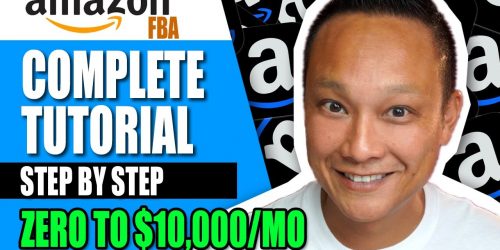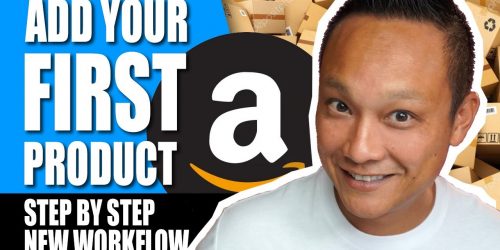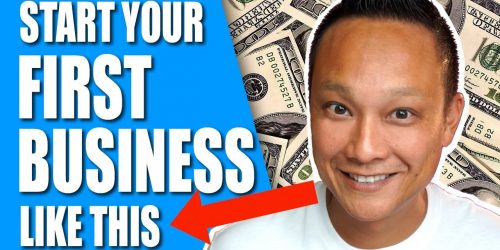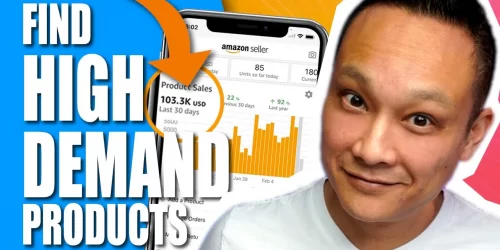Mistakes Amazon FBA Sellers are Still Making in 2022 & How to Avoid Them
What’s up guys, my name is Crescent and with Amazon growing by leaps and bounds, expanding their dominance over the online ecommerce marketplace ever since the Covid boom, I continue to see new sellers making the same basic mistakes that are almost always a guarantee to destroy their chances of succeeding on Amazon. So, I want to take this opportunity to go over what the common mistakes are as well as talk about a few new things we need to consider due to the current economic climate, global supply chain issues, and changes in online buying habits. But first, you can avoid a huge mistake by, smashing the like button for the youtube algorithm! Ok, so doing that might not actually help you with your Amazon business, but if you find value in this video, it really does help out this channel tremendously, and I would appreciate it, so thank you. Now, with that said, let’s get started.
Now, if you haven’t been following what’s been happening around the world lately, with the tensions overseas in Ukraine, Russia, China, Taiwan, and even here in the US, the entire global economy has been affected by a massive shortage of materials and supplies causing massive delays with manufacturing and to compound the problem, increased shipping costs and delays. Now, I’m not going to go into detail about why this is happening, you can research that on your own if you’re curious but as a business owner, especially if you’re new to manufacturing and selling on Amazon, you need to be aware of how these issues will affect your business and how you can deal with them.
So, first of all, due to the shortage of supplies and as we’re still recovering from the effects of Covid, there’s a labor shortage, too, increased fuel costs, and don’t forget that selling online has grown massively recently and therefore the demand on suppliers has also grown immensely, so manufacturing time and costs have also gone up. So, although I don’t foresee this lasting forever, this is something that you need to factor in when launching a new product. Contact overseas suppliers and get quotes on manufacturing costs and estimates on their delivery times. Also, contact freight forwarders to get shipping quotes and estimated shipping times. These added costs will play a significant role in the profitability of your products and whether or not it’s even a viable product to pursue. And the time frame for delivery may affect your product launch especially if you’re trying to target a specific holiday or season.
One strategy you can explore is to source elsewhere outside of China. Contact manufacturers locally and compare costs and delivery times. Sourcing locally can significantly cut down on the lead times since you don’t have to ship across an ocean or deal with importation and customs. Finding local suppliers and manufacturers isn’t difficult. I’ll leave a link in the description below on how you can find them if you want to learn more about that.
Now, don’t get discouraged if you discover the added costs are more than you expected. These added costs affect everyone, not just you. So, in most cases, these added costs will get passed on to the buyer by raising the sale price. Just keep in mind that pricing changes can lag behind the current economy, the current sellers that already have inventory may not have raised their prices yet since they have existing or old stock that was purchased at lower prices or they have existing contacts with their suppliers that allow them to keep their current prices low but once they run out of stock or their contacts expire, they will most likely have to raise their prices too. So, that’s something you’ll need to consider before launching your product and see if you can even be competitive and more importantly, profitable.
Now, speaking of profit, a huge mistake I see far too often is selling low-ticket products. What’s a low-ticket product? These are products that are typically sold for $15 or less. Now, I can see why these types are products are attractive to new sellers, they are much more affordable and require much less starting capital. But don’t fall for this trap! Amazon charges fees to sell on their platform and if you’re doing FBA, those fees are going to be at least $6-7 alone. Now, factor in your manufacturing costs, shipping, and duty, and you’re left with practically nothing for profit. Even if you consider that your costs are $5, that only leaves you with $2-3 profit. And if you add in any advertising costs, such as if you run any PPC campaigns, you can quickly eat through those low margins. That’s the problem with selling low margin products. You can’t absorb any added or unforeseen costs. Not to mention, low ticket items are almost always way too competitive anyways, and competitive niches lead to very expensive product launches and higher PPC and marketing costs.
This is why I always suggest making sure that your profit margin is at least $5, ideally $10 or more. If you can afford it, the best strategy is to sell high ticket items. These are products that typically sell for $50 or more. The reason is because the profit margins are almost always higher and due to the barrier to entry, there is far less competition. Another strategy is to sell in the categories that most beginners typically avoid due to the difficulty or added complexity of selling those types of products such as electronics or fragile items. These types of products typically have very high return rates due to the products not working, breaking, or the end users not understanding how to use them or poor instructions. If you do your due diligence to mitigate these problems, you can certainly consider selling these types of products as your first product.
Now, moving on… with that said, a huge mistake I see that blows my mind that it even happens in the first place, is not making sure that you’re even allowed to sell the product you’re interested in on Amazon. Amazon has a list of products that are prohibited or restricted. These are products that you are not allowed to sell on Amazon or you need approval ahead of time in order to sell. You can find a list of these products in the Amazon help section and I’ll leave a link to these help pages in the video description below.
Additionally, some products will require you to get ungated in the category the product falls under ahead of time in order for you to sell. Getting ungated categories in some categories can be quick and easy, you just need to fill out a form or answer a few questions and you’ll get access right away. However, other categories will require you to submit some documentation, certifications or invoices. You can find a list of gated categories here. But keep in mind, some main categories that are ungated may have gated subcategories.
https://sellercentral.amazon.com/gp/help/external/200164330
Now, for safety, some products may also require certifications like certain electronics, food, beauty supplies, toys and other baby or child related products. You won’t be able to sell these products without providing the proper paperwork and certificates. It can be cost-prohibitive if you have to get the product tested at a certified testing lab. Now, Amazon has a new compliance tool that can help you determine if there are any certifications that you’ll need. Just do a search for the product and it’ll tell if there are any required documentation or certifications that you’ll need to provide. Again, I’ll leave a link to this tool in the description below.
https://sellercentral.amazon.com/ckp
Now, if that mistake isn’t bad enough, I also see people get stuck trying to sell patented or trademarked products. Violating someone’s intellectual property is a serious offense and you can get sued until the cows come home, so make sure you’re not selling patented or trademarked products without first getting permission to do so. The most common excuse I hear is, “well, there’s a bunch of other sellers selling it”. Well, welcome to the real world. Just because you see other sellers selling the product on Amazon doesn’t mean you’re allowed to. They may have gotten permission to do so or if they haven’t, they simply haven’t been caught yet. Getting permission involves contacting the IP owner and working out a deal with them or purchasing your inventory from an authorized wholesaler. Amazon takes IP violations seriously and will require you to prove that you got permission or provide a valid invoice showing that you purchased your inventory legally. And don’t always trust what your manufacturer says. They may tell you that the product isn’t patented or trademarked but they may not know that it actually is. And if it is, those products are considered counterfeit and you will be the one liable, not them. Ok so, you’ve been warned!
Alright, now moving on. Let me ask you a question, what is YOUR reason for starting your business? Isn’t it to make money? I think Kevin O’leary actually says it best, “How do I make money?” Isn’t the point of running a business to make money? Far too often, when I’m consulting with new entrepreneurs, I find that they don’t know the answer to the simplest questions like, what are your costs? What are your expenses? What are your projected sales? And most importantly, what is your profit margin? Knowing these figures is fundamental to the success of your business. I don’t know how many times I’ve seen sellers selling products but they’re not actually making any money. Either their costs are too high, they don’t have a pricing strategy, or they don’t have a competitive advantage. Before you invest a single penny in your product, you should have done your product research to know ahead of time what your projected costs, expenses, monthly sales, and profit are. If those numbers don’t add up to profitability or you don’t even know what those figures are, then you’re just leaving things to chance. You’re basically gambling. You might as well just go to the casino. Now, if you want to know how to find and calculate these figures, I have a detailed video that goes over how to make sure you find profitable products to sell and I’ll leave a link to it in the description below.
Now, a common question when it comes to budgeting is how much to factor in for advertising and marketing costs. Well, when it comes to selling on Amazon, it’s always been difficult to estimate what you’re PPC costs will be until you actually do it and that’s because there are just far too many factors to give an accurate calculation. And on top of that, Amazon doesn’t provide any PPC tools or data to help us with that. However, there is a free PDF you can download from Perpetua that goes over aggregated PPC data that will give you a good idea of what you can expect to be spending on your PPC campaigns. Perpetua has analyzed several years’ worth of data and has broken down PPC costs by a ton of metrics like ACOS, impressions, and conversions as well as by category as you can see here.
This is such a powerful report and I’ll give you an example of how you can get a rough estimate of what your PPC costs will be. You can see on this report, it gives you real life data from all these categories. So, let’s say you plan to sell a product in the Tools and Home Improvement category. You can see that the average click through rate for this category is 0.40%, the average cost per click is $0.64 and the ACOS is 24.8%. Let’s say from your research, you estimate your monthly sales to be 300 units and if you plan to sell each unit for $30, then with some simple math, you know that your monthly revenue is $9000. And with the ACOS at 24.8%, you’d be spending around $2232 on your PPC ads. Now, I realize I ran through that pretty quick, but if you want to know exactly how I came up with those figures and how you can use this to your advantage, I suggest downloading the free PDF if you’re serious about nailing down your costs and I’ll leave a link to the download in the video description below.
Ok, now lastly, if you want to know what I believe is the biggest mistake people make, then please pay attention, I don’t want you to make this same mistake,.. and that’s not differentiating your product. I can’t stress enough how important this is. Think about it, when you’re deciding between several products to buy, what are you considering? Which one looks the best? Which has the best features? Which feels the best or tastes the best? And which one has the best value? And if two products are exactly the same, then you basically choose the cheapest one don’t you? So, don’t fall for this trap. Just because you see a product that is selling well, don’t think that you can just sell the exact same thing and do just as well. Your product needs to have a competitive advantage and that advantage should never be based solely on the price. If your only point of differentiation is the price, then basically everyone selling the same item will end up in a price war and everyone willl just keep lowering their prices until no one is making any money. Always differentiate by adding value. Improve the product, add a feature, fix a problem, bundle it with something, think outside the box and be creative. That way, by adding value, you can charge a premium rather than competing in a price war. In today’s economy, trying to differentiate just on a better listing and photos isn’t going to cut it. All the top sellers are going to have the best quality listings and photos, so you’re going to have to go the extra mile by having a competitive advantage as well as a fully optimized product listing. And with that said, always get professional photos taken. This is an area that you can not skim on. Don’t just photos with your phone or have a friend that has a nice camera take photos for you. High quality photos can make or break the success of your product. Hire a professional product photographer, they’re not that expensive. You can find good ones on fiverr.com and costs typically range from $75 to $300 depending on what you want done and it will pay dividends. Now, as far as how to differentiate, a great way is to bundle it with a small bonus item or improve the product. You can get ideas by reading the reviews of the other sellers. See what the buyers are complaining about and you can fix those problems and provide a better product.
And a pro-tip… don’t differentiate based on subjective attributes such as the color or theme. These are too personal. You can have the best product on the market but if someone doesn’t like the color, they’re not going to buy it. Differentiate based on qualities that are objective that will benefit anyone that uses the product such as better quality or materials. Or better features. Make sense?
So if you want to get in touch with me, you can find all of my contact details in the video description below. I’d love to hear your thoughts, so leave a comment or question in the comment section below, I answer every single one.
And as always, if you found value in this video, consider subscribing. And do me a favor smash that like button for the youtube algorithm it really does help me out and I’d appreciate it, and ring the bell so you never miss a future video! Alright, thanks for watching!





